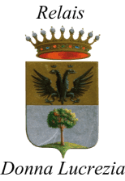Discover the history of our historic residence in the centre of Rome
The history of this house, where we welcome you, begins with Cavaliere Italo Signorini, who left the Veneto region at the end of the 19th century and, after a few years living in Africa, came to Rome in the early 1900s and bought the building on Via Veneto, which soon after became the Grande Albergo Flora, which still exists today.
In the early 1920s, with Albergo Flora in full swing, he decided to build the Palazzo where "Relais Donna Lucrezia" now stands, which was bequeathed to his seven children. At the end of the 1940s, Italo Signorini's granddaughter, Francesca, married Count Moroni, a cavalry officer and riding champion, descendant of an ancient and noble family from Bergamo. This family has its origins in Albino, a small village in the Bergamo Valleys, which was also the birthplace of the painter Giovanni Battista Moroni, who lived in the mid-16th century.
In the early 1920s, with Albergo Flora in full swing, he decided to build the Palazzo where "Relais Donna Lucrezia" now stands, which was bequeathed to his seven children. At the end of the 1940s, Italo Signorini's granddaughter, Francesca, married Count Moroni, a cavalry officer and riding champion, descendant of an ancient and noble family from Bergamo. This family has its origins in Albino, a small village in the Bergamo Valleys, which was also the birthplace of the painter Giovanni Battista Moroni, who lived in the mid-16th century.
Giovanni Battista Moroni, born in Albino around 1522, after his training in Moretto's workshop in Brescia, devoted himself to portraying influential personalities of his time and religious subjects. His presence in Trento during the Council in 1551 is ascertained, where in addition to the altarpiece in the Cathedral, he painted the portraits of the Count Madruzzo bishops, now in the Washington National Gallery. Today, Moroni's paintings can be found in the world's most important museums, which is why we have decided to have a reproduction of the illustrious painter's portraits in every room.
The Conti Moroni family, whose documented origins date back to 1300, owes the beginning of its fortunes to Battistino Moroni, a 'cloth merchant'. Around the mid-1500s, the family moved to Bergamo, where in 1636 Francesco Moroni and his wife Lucrezia began the 30-year-long construction of the Palazzo, a masterpiece of Baroque art and still owned by the family today. In the early 1800s, Count Alessandro Moroni transformed an old country house into today's Villa Moroni di Stezzano, in neoclassical style. Over the centuries, the family increased its fortunes by dedicating itself to mulberry tree cultivation and silkworm breeding: in fact, the family coat of arms, which can be seen above the fireplace in the dining room, depicts a mulberry tree.
The Conti Moroni family, whose documented origins date back to 1300, owes the beginning of its fortunes to Battistino Moroni, a 'cloth merchant'. Around the mid-1500s, the family moved to Bergamo, where in 1636 Francesco Moroni and his wife Lucrezia began the 30-year-long construction of the Palazzo, a masterpiece of Baroque art and still owned by the family today. In the early 1800s, Count Alessandro Moroni transformed an old country house into today's Villa Moroni di Stezzano, in neoclassical style. Over the centuries, the family increased its fortunes by dedicating itself to mulberry tree cultivation and silkworm breeding: in fact, the family coat of arms, which can be seen above the fireplace in the dining room, depicts a mulberry tree.
Today, the descendants of the family still dedicate themselves to farming on their farm in Sabina, about 40 km from Rome, where they produce cheese, cold meats, extra virgin olive oil and eggs that you will find on your breakfast table every morning, as well as being able to buy them to have as a souvenir when you return home.









